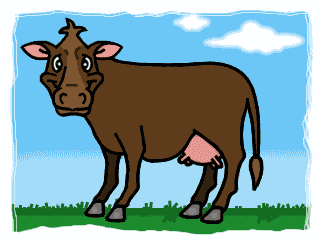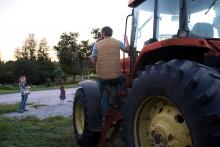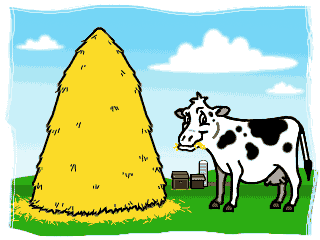
COWS: AMAZING MILK-MAKERS!
Canada’s dairy cows are amazing animals! They produce about 24 litres of milk every day—that’s enough to fill 100 glasses! Cows produce so much milk because they have such huge appetites. They spend a lot of time eating. In fact, each day a dairy cow eats a special diet of about 20 kg of food while drinking 80–160 litres of water.
A HEALTHY START
Cows can only start to produce milk once they’ve had a baby cow, known as a calf. For calves, like all mammals, milk is the only food early in life. The proteins and nutrients in milk provide the energy and building materials necessary for healthy growth. Milk also contains antibodies that protect a young mammal against infection—an important factor for starting life out right!
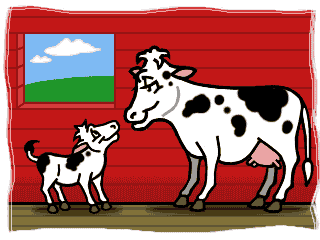

WHERE MILK BEGINS
When a cow eats and drinks, it results in milk being produced in the cow’s udder. The udder is a semicircular organ composed of glandular tissues that contain milk-producing cells. As the cells do their job, the part of the udder known as the cistern fills with milk. Once the cistern is full, the cow is ready to be milked.
MILKING THE COWS
Milking is done in the barn and cows are milked two or three times each day. Cows enjoy being milked. In fact, it is unpleasant for a cow with an udder full of milk not to be milked. Not too long ago, all milking was done by hand, one cow at a time. Today, dairy farms use automatic milking machines that milk a cow in just 5–8 minutes. To make sure the milk stays fresh, all milking equipment is completely washed before each milking. Milk straight from the cow is called raw milk—this raw milk is sent directly to refrigerated storage tanks in another area of the barn. These tanks quickly cool the milk to 4°C (about the same temperature as your fridge) to keep it fresh.
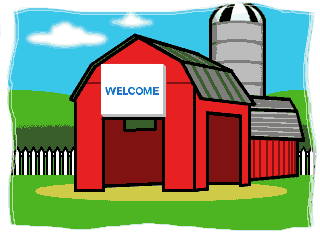
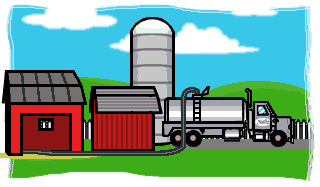
HITTING THE ROAD
Milk is stored in these tanks for only a day or two before being piped into the special insulated milk trucks that visit the farms. You’ve probably seen these big silver tanker trucks driving down the highway with “Milk” written on the tanks. These trucks collect the milk and deliver it to dairies.
AT THE DAIRY
Milk is piped directly from the milk truck into refrigerated storage tanks at the dairy. Every batch of raw milk is tested to make sure it has the proper freshness and nutrition and contains no impurities. Once the milk passes all of these tests, it’s ready for the separator.
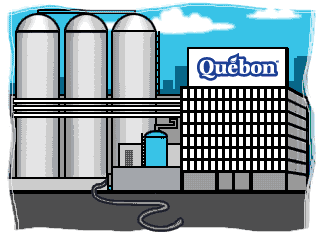
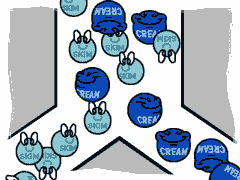
SEPARATING MILK
The separator is a piece of equipment that separates raw milk into skim milk and cream. Skim milk is produced by removing virtually all of the naturally occurring milk fat from the milk. The remaining mixture containing all of the milk fat is cream.
STANDARDIZING MILK
Once it’s through the separator, milk is standardized by fat content. As you may know, you can buy milk in several varieties, each with a different milk-fat content: homogenized (3.25%), 2%, 1%, and skim. To produce each variety of milk, a specially determined amount of cream is added back into the skim milk. The milk is now ready for pasteurization.
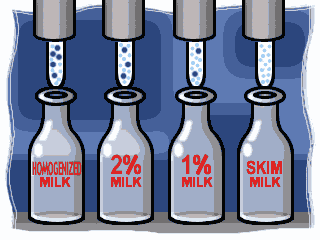
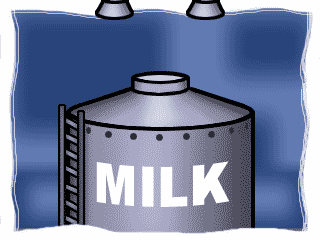
ADDING VITAMINS
Before homogenization, vitamin D is added to all milk. Vitamin D, combined with the calcium that naturally exists in milk, helps give us strong bones and teeth. Interestingly, vitamin D and milk’s natural calcium work together to magnify their respective effects. They provide more nutritional value than taking the same amount of vitamin D and calcium separately. Dairies also add vitamin A to skim, 1%, and 2% milk. Vitamin A is good for our eyesight.
HOMOGENIZATION
Milk must then be homogenized. Without homogenization, the milk fat would separate from the milk and rise to the top. Milk fat is what gives milk its rich and creamy taste. Homogenization makes sure that the fat is spread out evenly in the milk so that every sip of milk has the same delicious flavour and creamy texture. Milk is transferred to a piece of equipment called a homogenizer. In this machine the milk fat is forced, under high pressure, through tiny holes that break the fat cells up into tiny particles, one eighth of their original size. Protein, contained in the milk, quickly forms around each particle, preventing the fat from rejoining. The milk-fat cells then stay suspended evenly throughout the milk.
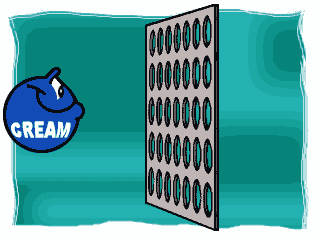
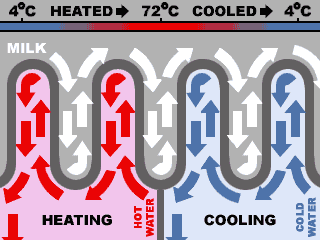
PASTEURIZATION
Pasteurization is the process that purifies milk and helps it stay fresher, longer. Milk is pasteurized by heating it to 72°C for 16 seconds and then quickly cooling it to 4°C. Pasteurization is named after Louis Pasteur, the famous scientist who discovered that this process destroys the bacteria that naturally develop in raw milk. By destroying the bacteria, milk is made safe to drink and holds its delicious flavour for much longer.
PACKAGING MILK
The milk is now ready to be packaged. Milk is pumped through automatic filling machines directly into bags, cartons, and jugs. The machines are carefully sanitized and the packages are filled and sealed without human hands. This keeps outside bacteria out of the milk, which helps keep the milk fresh. During the entire time that milk is at the dairy, it is kept at 1°C–2°C. This prevents the development of extra bacteria and keeps the milk at its freshest.
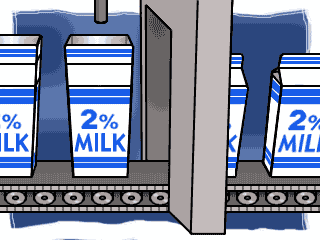
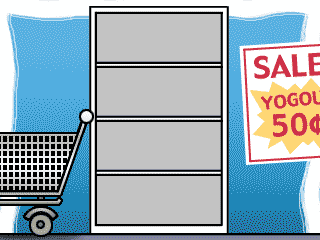
TO THE STORE
Milk is delivered to grocery stores, convenience stores, and restaurants in refrigerated trucks that keep the milk cooled to 1°C–4°C. The stores take the milk and immediately place it in refrigerated storage areas. Because fresh milk is so important to our diets, dairies will often deliver fresh milk to the stores two or even three times per week.
HOW DO WE GET CHOCOLATE MILK?
Believe it or not, chocolate milk doesn’t come from brown cows! It’s made just like white milk, except that cocoa is added to the regular white milk during the standardizing stage of milk production. That’s why chocolate milk contains all of the same great nutrients and minerals as white milk.
